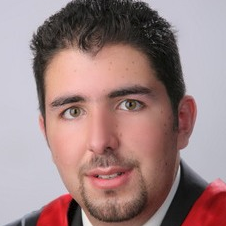
Issam Hammad
Work place: Dalhousie University/Electrical and Computer, B3J3L3, Halifax, Canada
E-mail: issam@dal.ca
Website:
Research Interests: Computer Science & Information Technology, Computer systems and computational processes, Computer Architecture and Organization, Computer Networks
Biography
Issam Hammad was born in Amman, Jordan in 1986. He received his B.Sc Degree in Computer Engineering from Princess Sumaya University for Technology, Amman, Jordan, in 2008 and his M.A.Sc Degree in Electrical and Computer Engineering from Dalhousie University, Halifax, NS, Canada, in 2010. . He is currently working as a technical consultant for SWI System ware Innovation Corporation, Toronto, Ontario, Canada. His research interests include video processing, cryptography and computer architecture.
Author Articles
Low Complexity Multimedia Encryption
By Karthik. Thiyagarajan Kamal El-Sankary Yongsheng Wang Issam Hammad
DOI: https://doi.org/10.5815/ijcnis.2016.04.01, Pub. Date: 8 Apr. 2016
Selective encryption algorithms have been proposed to encrypt syntax elements such as intra prediction modes, the sign bit of nonzero DCT coefficients, along with the sign bit of motion vectors. These syntax elements are sensitive enough to produce effective scrambling effect with a relative low computational cost. In this paper, a novel scheme is proposed to further optimize the computational overhead incurred by the encryption for energy critical multimedia applications. The proposed scheme adjusts the selection of syntax elements to be encrypted according to the scene transitions within adjacent video frames. The ratio of intra-coded macroblocks in inter (P and B) frames is calculated and compared with an adaptive threshold value to detect the scene transitions. Furthermore, based on statistical analysis for a few video sequences, a dynamic threshold model to detect the scene transition is proposed. When there is a scene transition between the previous video frame and the current video frame, intra prediction modes and the sign bit of DCT coefficients in the current frame are chosen as syntax elements to be encrypted, whereas in the absence of a scene transition, the sign bit of motion vectors is chosen as the only sensitive syntax elements to be encrypted. Experimental results show that compared with previous work in this field, the proposed scheme can efficiently lower the computational cost incurred by the encryption while maintaining a similar perceptual scrambling effect.
[...] Read more.Other Articles
Subscribe to receive issue release notifications and newsletters from MECS Press journals